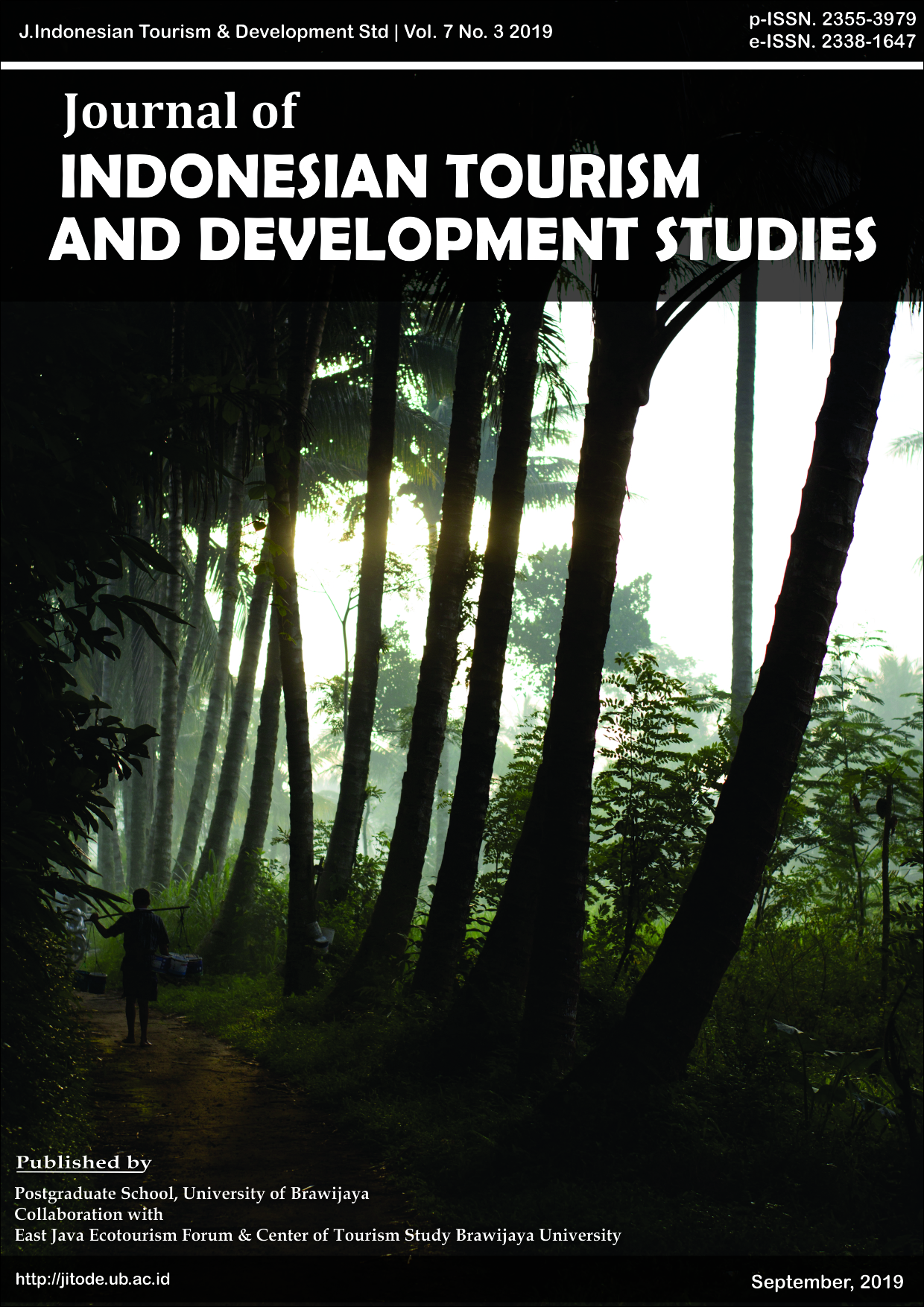Risk Management of OHS for Landfilling Construction in Talangagung Edu-Tourism Landfill
DOI:
https://doi.org/10.21776/ub.jitode.2019.007.03.07Abstract
Talangagung Edu-Tourism Landfill is one of the landfills in Indonesia that leads to the Edu-Tourism Landfill. Thus, there is a need for OHS risk management for workers to improve service to tourists. Aim of the study is to determine, identify, analyze, and compile hazard sources or injury potential and risk assessment in activities from technical workers in the work area of Talangagung Edu-Tourism, as well as risk control that can be applied to reduce the consequences of each hazard sources or injury potential. The data collected through observations, interviews, and brainstorming to all technical workers and a chief. The processing of occupational health and safety risk management data was based on the Job Safety Analysis (JSA) concept. The hazard source or injury potential identification finds 7 activities. Each of which several steps along with their hazard source or injury potential and consequences identified. There are 43 hazard sources or injury potentials, from which, based on the risk assessment, 14 are extreme (E), 12 are high (H), 2 are medium (M), and 15 are low (L). The control divided into two. Eight of the controls conducted by the management of Talangagung Edu-Tourism and seventeen of the rest controls suggested by the researcher. By applying OHS Risk Management, they will increase the number of tourists because it improves the quality of the workers in service.
Keywords: Job Safety analysis, OHS, risk management.
Downloads
Published
Issue
Section
License
Copyright (c) 2019 Journal of Indonesian Tourism and Development Studies

This work is licensed under a Creative Commons Attribution 4.0 International License.
Authors who publish with this journal agree to the following terms:- Authors retain copyright and grant the journal right of first publication with the work simultaneously licensed under a Creative Commons Attribution License that allows others to share the work with an acknowledgement of the work's authorship and initial publication in this journal.
![]()
- Authors are able to enter into separate, additional contractual arrangements for the non-exclusive distribution of the journal's published version of the work (e.g., post it to an institutional repository or publish it in a book), with an acknowledgement of its initial publication in this journal.
- Authors are permitted and encouraged to post their work online (e.g., in institutional repositories or on their website) prior to and during the submission process, as it can lead to productive exchanges, as well as earlier and greater citation of published work (See The Effect of Open Access).
Â
Â


















